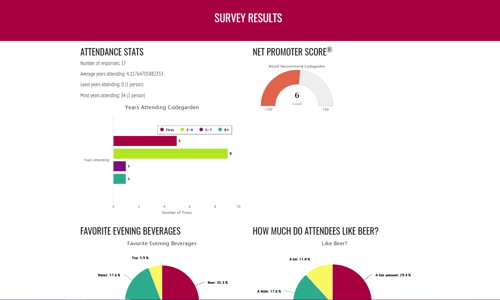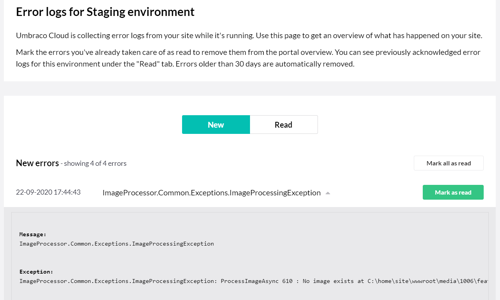 “What!?!” – You might be thinking. “I need more than ONE?” Well…maybe. It all depends on your business and what products and services you are planning to offer. You see, websites are like other types of media, different formats exist for different purposes. A company might publish a brochure, a newsletter, and a display ad for a magazine. Each would have a different type of content, and certainly a different layout, size, complexity, etc. Similarly, you might decide that you need a few different formats for your “online media”. I will explorer a few common formats for businesses.
“What!?!” – You might be thinking. “I need more than ONE?” Well…maybe. It all depends on your business and what products and services you are planning to offer. You see, websites are like other types of media, different formats exist for different purposes. A company might publish a brochure, a newsletter, and a display ad for a magazine. Each would have a different type of content, and certainly a different layout, size, complexity, etc. Similarly, you might decide that you need a few different formats for your “online media”. I will explorer a few common formats for businesses.
The Company “Brochure” Site
www.MyCompany.com
I use the term “brochure” in quotes because having a “brochure website” in the modern online landscape is usually considered a bad thing. The word connotes a dull, lifeless site with perhaps 10 pages of marketing-speak which never changes. Yes this would be a “bad” thing (though better than no website at all, I assure you!), especially because it is so easy to add richness and value to your company website. I will use the term to distinguish this format from others discussed below.
This is the first type of site you should consider building for your company. A company website is your “main” website. It should be the “overview” of your business and present in an organized fashion information about the business and everything you offer. Common content includes: About, Contact, Services, Products, Testimonials/Case-Studies/Portfolio, News/Updates, Press/Media, Events, Articles, etc.
If you create multiple divisions of your business which cater to different target markets, you might want a different Brochure Site for each one. If your different divisions have the same target market, you may just need separate sections on your main site for each division.
No matter how many other sites you end up creating, generally, your Brochure Site will somehow mention or link to all the others.
Blog
www.MyCompany.com/blog OR www.MyBlog.com
Your blog might be on the same domain as your company site, or it might be completely separate, but either way it is a good idea to think about it as a separate website since it has a completely different format. A blog has certain features that you generally don’t see on other formats of websites. First of all, content is arranged chronologically as the primary organizational structure, like a diary. The other thing about blogs is that the nature of the content on a blog is in the format of essentially stand-alone posts. They generally stand alone because a blog usually offers additional ways to view the content – grouped into Categories or with Tags – which means you cannot know exactly how a visitor will be viewing the posts and in what order. These structures tend to define the graphical layout of a blog as distinct from the layout of your Brochure Site. Forcing your blog to conform to the exact layout of your Brochure Site will frequently limit the additional functionality a blog offers or at least make it awkward to access. Having a different (but coordinating) layout for your blog is normal.
Sales-Page Website
www.MyGreatProduct.com, www.MyOtherProduct.com, www.MyBigEvent.com
You may or may not be familiar with the Sales-Page Website which is popular with internet marketers and info-product publishers. The format tends to be very basic – the branding is limited to a banner and background color, and the rest of the generally one-page website is a white background with black text and colored headers and call-outs. The content tends to be a long-format letter, from the site owner, to the visitor, laying out the case for the visitor to complete a single desired action – which might be to sign up for a free product, or make a purchase of a product or service. The important thing about a Sales-Page Website is that it is essentially a single (albeit often very long) page. There might be some Privacy Policy or other “administrative” links at the bottom of the page, but the point of a Sales-Page is to give the visitor no other options than to read through the page to the bottom (where they will see the “Buy Now” button or sign-up form), or leave the site entirely. This is the essential design and function.
You might want to have some Sales-Page Websites for each product, service or event you are selling – and you would need to have a separate site for each. The single-minded focus of the format only allows for ONE main desired action per site. You don’t want your visitor to have more options which might lead him away from completing the desired action.
Generally, your Brochure Site could have links to your Sales-Page Websites, but your Sales-Page Websites would not have a link to your Brochure Site (until, perhaps, AFTER the desired action has been completed, on an order confirmation page, for example).
Membership Site
www.StuffForMyClients.com
A Membership Site can take some different formats, but essentially, offers useful content to your clients. The idea of a Membership Site is that you will be requiring visitors to register in order to view the content. You might have some content outside of the “protected” log-in required area, but the bulk of the “good stuff” is inside the protected area. You might choose to charge a monthly or annual fee for access, or you might require only giving up an email address. You might even have different levels of access to the content, with different prices, etc. Your Membership Site might also be exclusively for clients who have purchased a certain product or service you offer, as part of the product, as a support to the service, or as a bonus. There are many ways a Membership Site can fit into your client servicing and business plan.
This is a fairly advanced type of site to set up. You need to have a clear plan for its implementation, and be willing to continually refresh the content to make continued membership valuable.
Web Action Steps
- First, get your Company “Brochure” Site up and running. This serves as the jumping-off point for your other sites.
- Only start your business Blog once you are ready to commit to adding some content to it.
- Consider what you are currently offering your clients and whether additional sites would be a good part of your marketing & sales plan.
- If content is something you can offer your clients, explore how a Membership Site might be a viable additional revenue stream or value-added service.
Having multiple web properties as part of your business plan is a great idea for growth and marketing, however, you need to put first-things-first and have a comprehensive plan for how your sites will integrate with one another.
If you are not sure how all these types of sites should fit into your business plan, or if you need help building any of them, please contact me so I can help you.








